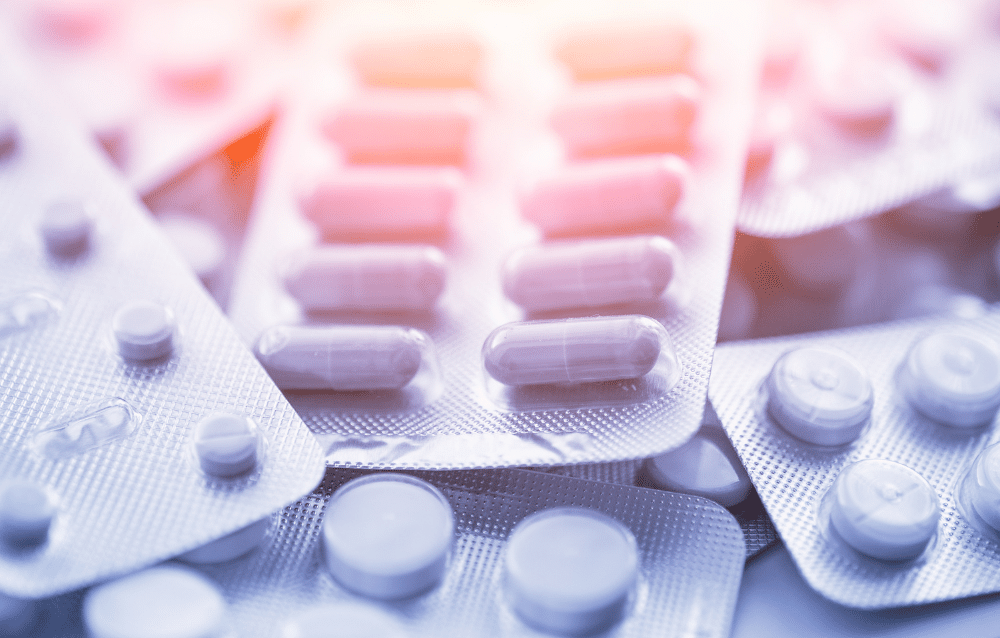5 Most Popular Foil Blister Pack Material Thicknesses for Pharmaceuticals
Pharma
November 30, 2022Reading time: 2 minutes

Blister packaging — or blister packs — is two-part pre-formed packaging consisting of a thermoformed plastic tray and a flexible lidding material or a cold formed tray and a lidding material. The lidding material typically contains aluminum foil and is bonded to the formed tray by heat sealing.
Blister packs can be found in many markets, but it is most prevalent in the pharmaceutical industry. As such, there are 5 popular foil blister pack material thicknesses used for best performance and protection.
Why is blister packaging so popular for pharmaceutical products?
There are several advantages to using blister packaging for pharmaceuticals:
-
Product integrity: Pharmaceutical products can be sensitive to moisture, oxygen, and light — conditions that could cause efficacy concerns in pharmaceutical ingredients. Blister packaging materials such as lidding foils can be selected and combined to create barriers that block exposure to elements that could cause product degradation
-
Protection: Blister pack packaging material provides a range of protections. Since the construction requires lidding to be physically broken to access pharmaceuticals, there is an immediate indication of any potential product or package tampering. Also, blister packs are commonly designed to child-resistant packaging standards which reduces risk of child poisoning. Blister pack tray cavities are customizable. Tablets can nest securely to keep from being jostled and damaged during shipping or product package handling
-
Dosage compliance: Blister packs contain a series of individual doses of medication. Therefore, dosing quantities and accuracy are easily tracked by patients. In some cases, blister pack lidding is pre-printed with daily or weekly cues to help patients verify that they took the proper amount of medication on the correct schedule, and also better maintain refills
Choosing an aluminum lidding thickness
Blister packs are generally constructed in one of four ways: push-through, peel-open, peel-push, and tear-open. To meet performance expectations for each of the packaging types, foil lidding comes in different flexibility/rigidity tempers, and thicknesses (also known as gauges):
- Ultra-light gauge foil is soft temper, and measures 0.006-0.007 mm thick
- Light gauge foil is soft temper, and measures 0.008-0.012 mm thick
- Aluminum strip packaging foil is soft temper, and measures 0.02-0.05 mm thick
- Aluminum blister lid foil typically measures 0.012-0.025 mm thick
- Aluminum cold forming foil is soft temper, and measures 0.045-0.06 mm thick
Pharmaceutical blister packs align with the range of foil options to create solutions appropriate for standard and custom applications. Generally:
-
Push-through blister packaging is constructed so medication doses are pushed through the lidding. As such, hard temper aluminum is typically used. Soft temper aluminum is also sometimes used, but it is less common. Lidding with a relatively higher puncture strength can sometimes be used to achieve a level of child resistance
-
Peel-open blister packaging is constructed so medication doses are dispensed when the lidding is peeled from the tray. Lidding for peel-open applications combines aluminum with a paper backing or a paper/PET backing
-
Peel-push blister packaging is constructed so medication doses are dispensed through a combination of peeling back a lidding layer, then pushing the pharmaceutical through the remaining aluminum foil. Peel-push lidding is layered paper/PET/aluminum foil/HSC
-
Tear-open packaging is constructed so medication doses are dispensed by tearing the package open. Materials used for tear-open packaging are paper/PET/aluminum foil/HSC
Opening features and functionalities differ, but there is a commonality in using aluminum foil in blister packaging. Aluminum foil provides consistent barrier protection, heat sealing compatibility with a wide range of forming films, and potential sustainability opportunities.
There is no shortage of decisions when it comes to finding the proper blister packaging materials and construction for your pharmaceutical products. Learn more about what to prioritize in Exploring Pharmaceutical Blister Packaging Opening Features. Click the button below to download your copy now.

